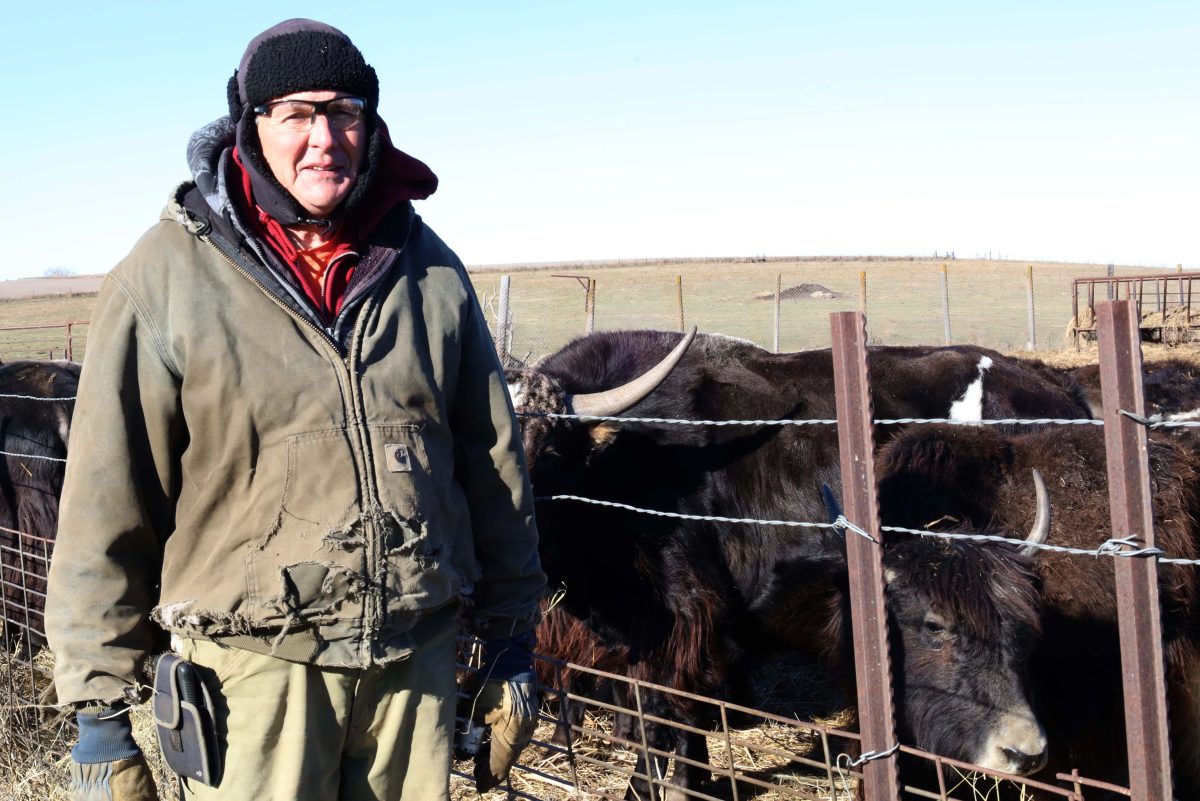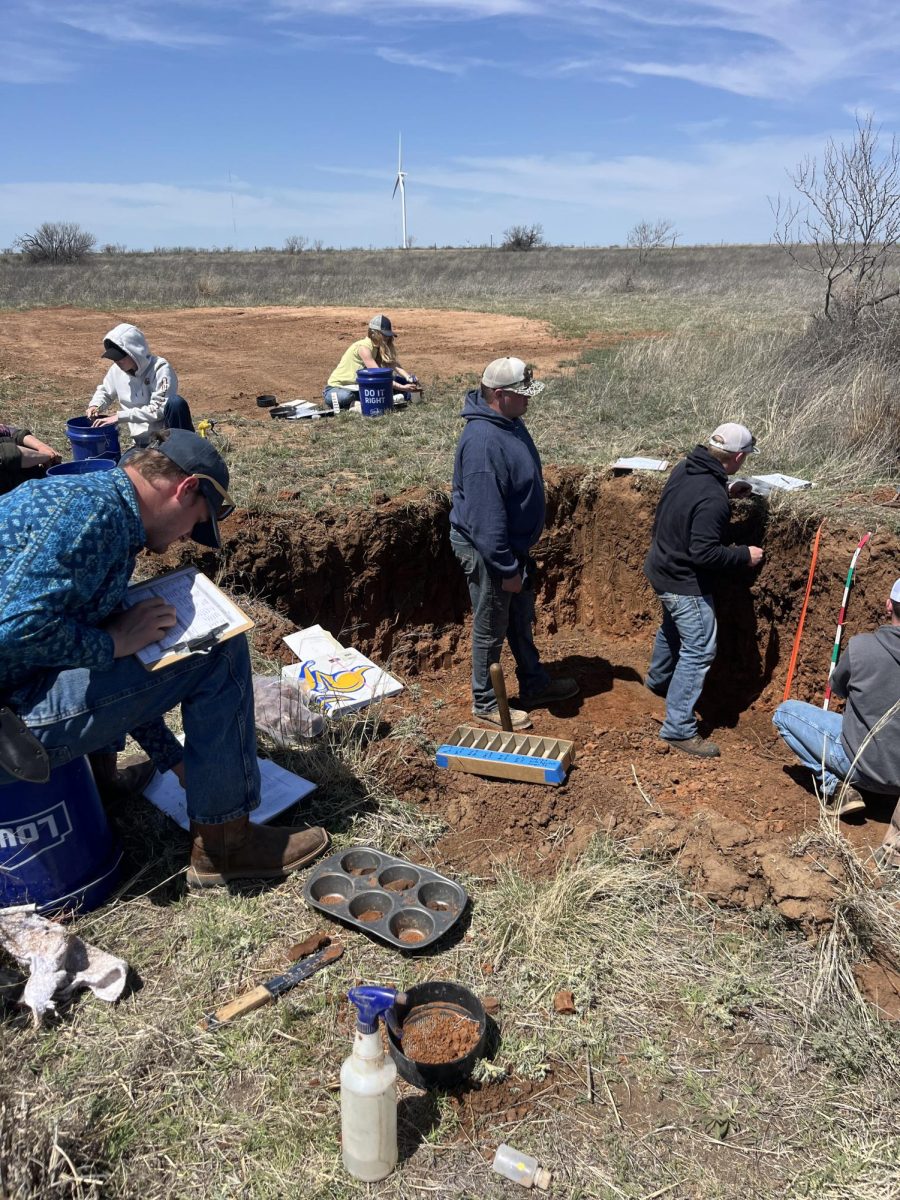On the prairies of South Dakota, it is normal to see cattle, sheep, and horses but just north of Sinai you will find yaks grazing the pastures. These yaks are owned by Dave Tvedt, the founder of The Pink Flamingo Yak Ranch.
Tvedt got into yak herding 15 years ago, after having a conversation with one of his neighbors who frequently attends exotic animal auctions. His neighbor bought a few bred cows and a bull and asked if Tvedt would be interested. Tvedt has previous experience with livestock from raising sheep and horses and with some research in yaks he “fell in love with the animals.”
They “are unique animals, every animal has a personality,” Tvedt said. “Yaks look like a cow, have the prance of a horse and the sassiness of an ewe.”
They are mostly good-tempered animals but it’s essential to provide human interaction as much as possible as calves or they tend to “get ornery.”
Yaks are in the same genus as cattle and originate in China, Central Asia, Mongolia, and Nepal, and they are used to high elevations. There are two distinct breeds of yaks, the domestic yak and the wild yak. The domestic yak is described as slightly smaller than the wild yak and has more tolerance to lower altitudes making it more diverse in where it can be located.
Yaks are primarily known for their relation to the people of Tibet that use these animals in every facet of their lives. Yaks provide milk, meat, transportation, hair/hides and companionship.
The milk of a yak is a pink or white color and is sweet and rich with a strong fragrance. According to Heifer International, it is pungent. Fat content within the milk is higher than cow milk which is ideal in making cheeses, lamp fuel and soap. It is higher in protein, calcium, and iron than its more domesticated ancestor. Yaks don’t produce as much milk as dairy cows with only a half gallon of milk produced daily.
According to Tvedt, Yak meat is “similar to elk,” The meat is especially lean and has a very high calorie content.
Stephine Davis from The International Yak Association (IYAK) said, “95% of people like yak once they try it.” One way ranchers have improved meat production is to cross yaks with beef breeds of cattle. This creates Yattle. The downside is that Yattle bulls are infertile and with the creation of this cross the wild yak herds are being affected. Another issue is that yak processing is difficult since yaks are still considered exotic so the processor must have a “volunteer stamp” to slaughter the animal, reducing the number of available processors.
Yak hair is considered the same quality as cashmere and angora wool according to Northwest Yarns & Mercantile because it is very soft and warm. The fiber is collected by brushing out the coat during the spring and then weaving it. The hair can be used to make anything from mittens, sweaters and can be used for felting.
The out-guard hair of a yak is tougher, it’s mostly used for ropes and rugs. The biggest challenge with the hair to turn into yarn is the availability of mills for processing.
According to IYAK there are an estimated 3,500 registered yak herds and 10,000-20,000 unregistered herds in North America.
Some benefits to owning yaks are they don’t require very much help in calving, are disease resistant, effective in defending against predators and don’t require as much land or feedstuffs as other cattle species.
Yaks “can provide for their family,” said Daniele Garner of Pettee Ranch. “They are awesome animals, multi-purpose species and very intelligent.” Making them an alternative to other livestock production and popular with hobby farmers or people with less land.
One roadblock to yaks becoming more common is that the USDA will only allow importation of yaks and reproductive material of yaks to zoos and breeders with certificates of importation. In 2019, the export of yaks from Canada became legal but requires a “quite lengthy process,” said Garner. The importation ban was put in place due to possible disease transmission and political issues. All imported yaks into the United States have been through Canada that IYAK is aware of. According to the Wildlife Conservation Society, there are no precise wild yak population statistics, but it is estimated to be about 15, 000 to 20,000 wild yaks worldwide and are at risk of becoming endangered.
With shaggy hair, deep bellow grunts and the u-shaped horns, yaks are an interesting addition to the South Dakota livestock industry. Dave Tvedt is “hoping the community gets more interested” with yaks and the culture they hold. Tvedt said “it’s a slow process” raising yaks but his hope is to start selling starter herds and introduce the Brookings area community to a new kind of animal.
Something to yak about
RuthAnn Holmes, Ag Reporter
January 16, 2024
Dave Tvedt proudly stands next to 5 out of his total 80 Yaks at Pink Flamino Yak Ranch north of Sinai South Dakota on Tuesday, Nov. 21, 2023.
2
2
Tags:
More to Discover























Rene Homola • Mar 26, 2025 at 9:17 am
My husband and I just happened upon this herd a couple weeks ago!
What a surprise to find them in our area! Yesterday I took my mom for a drive for her 80th birthday and took her to see them. She said it took her 80 years to see one in real life and she will never forget it!
Lela Rose • Mar 16, 2024 at 12:56 pm
Do you sell and ship product? Cost per pound?